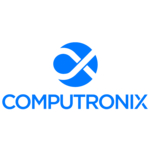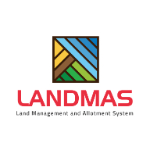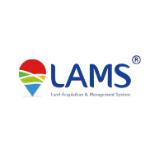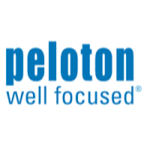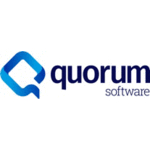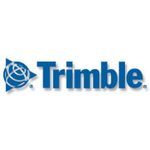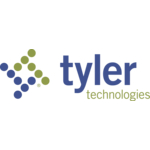MaintStar is a leading software that revolutionizes maintenance management for businesses of all sizes. Designed to streamline processes and enhance efficiency, MaintStar offers a robust suite of features that simplify and automate maintenance tasks...Read MaintStar Reviews
TechnologyCounter provides genuine, unbiased real user reviews to help buyers make informed decisions. We may earn a referral fee when you purchase through our links, at no extra cost to you.
List of Best Land Management System
Showing 1 - 12 of 12 productsBluetick, the newest software in the market that is revolutionizing the way businesses manage their customer relationships. Designed to streamline communication and increase efficiency, Bluetick offers a seamless experience for businesses of all size...Read Bluetick Reviews
CityView Suite is a software solution for city governments looking to streamline their operations. With its user-friendly interface features, CityView Suite helps cities of all sizes manage their essential functions with efficiency and accuracy. Say...Read CityView Suite Reviews
POSSE is a software designed to streamline and simplify your business operations. With its advanced features and user-friendly interface, POSSE is a solution for all your business needs. Say goodbye to complexity and hello to efficiency with POSSE...Read POSSE Reviews
LANDMAS is a software designed to revolutionize the way you manage, analyze, and strategize your land assets. With user-friendly features technology, LANDMAS streamlines and simplifies land management processes to maximize efficiency and drive growth...Read LANDMAS Reviews
CyberSWIFT LAMS, the innovative Learning Activity Management System designed to enhance the online learning experience. With advanced features and user-friendly interface, LAMS revolutionizes the way educational activities are created, delivered and...Read CyberSWIFT LAMS Reviews
My Lead Now, is a solution for lead generation. In todays fast-paced business world, finding qualified leads is crucial for success. With My Lead Now, you can streamline your lead generation process and connect with potential customers effortlessly...Read My Lead Now Reviews
LandView is a tool designed to transform the way you view and manage land data. With its user-friendly interface features, LandView simplifies the process of land analysis and decision-making. Experience the efficiency and convenience of LandView for...Read LandView Reviews
myQuorum is a solution for streamlining your business operations. With a user-friendly interface and robust features, myQuorum helps businesses of all sizes to efficiently manage their daily tasks and increase productivity. Say goodbye to complex sof...Read myQuorum Reviews
Landfolio is a software that simplifies land management for companies of all sizes. With its user-friendly interface features, Landfolio streamlines the process of land tracking, lease management, and revenue distribution. Say goodbye to tedious pape...Read Landfolio Reviews
Tyler Permitting & Licensing is a trusted and innovative solution for managing permits and licenses. Streamline processes and increase efficiency with Tylers user-friendly platform. Say goodbye to paper-based systems and hello to a seamless, digital...Read Tyler Permitting & Licensing Reviews
Efficiently manage your contractual obligations with Upstream Land - the feature-rich land management system that provides a real-time view of your lease agreement. Easily make mass changes as needed, and utilize the KPI dashboard to handle up to 300...Read Upstream Land Reviews
- What Is Land Management System?
- Top Reasons Why Businesses Need Land Management System?
- What Are the Top Key Features of Land Management System?
- What Are the Top Benefits of Land Management System?
- What Are the Steps to Choose the Right Land Management System?
- What Are the Types of Land Management System for Different Industries?
- What Are the Technology Trends for Best Land Management System?
- What Are the Deployment Options for Land Management System?
What Is Land Management System?
The Land Management System (LMS) is a software application utilized for the purpose of systematically managing land resources and facilitating informed decision-making pertaining to their utilization.
The best land management software documents data pertaining to land ownership, land utilization and zoning regulations, soil appropriateness and productivity capacities, zoning modifications, rights-of-way, and additional land assets.
These land management companies offer advantages to both public and commercial entities by facilitating informed decision-making around property ownership and utilization. In general, a Learning Management System (LMS) is designed to hold data in a centralized repository.
This repository comprises multiple levels, including a foundational layer that encompasses soil data, land usage data, administrative data, and other relevant datasets. This facilitates the ability of government authorities and citizens to make well-informed decisions regarding land utilization.
Furthermore, remote sensing technology aids in the monitoring of land use for various entities such as organizations, governments, and private landowners. It also facilitates the development and management of land use plans.
For example, the utilization of Land Management Systems (LMS) can facilitate the identification of land areas that are conducive to agricultural activities. Additionally, LMS can aid in the strategic planning of land use zoning modifications, thereby ensuring the comprehensive consideration of many stakeholders' interests and fostering the implementation of ecologically sustainable land use initiatives.
Additionally, it is beneficial to ascertain alternative avenues and resolutions in cases where legal conflicts develop pertaining to the possession and/or utilization of land.
In summary, top land management software encompasses an extensive range of land ownership information and land use possibilities, thereby empowering individuals and entities to make better-informed choices on land use and ownership.
Top Reasons Why Businesses Need Land Management System?
1. Enhances the precision and effectiveness of land inventory monitoring
2. Enhances regulatory supervision and governance pertaining to land acquisitions
3. Facilitates the capacity to effectively mitigate risks associated with permitting and compliance.
4. The provision offers enhanced transparency regarding land ownership and possible legal obligations.
5. One of the key benefits of automation is its ability to streamline and optimize various processes inside an organization. In particular, automation plays a crucial role in enhancing efficiency by automating data mapping, gathering, and analysis.
6. The implementation of this technology facilitates the adoption of proactive approaches in making informed judgments and formulating effective strategies for land management.
7. Utilizes digital technology in order to enhance the efficiency of asset management across diverse systems.
8. Facilitates the capacity to effectively adapt to dynamic market conditions and minimize adverse consequences.
9. Recognizes potential avenues for optimizing land utilization to enhance financial gains.
10. The provision of timely and thorough information regarding land assets is facilitated.
11. Provides support in the process of budget forecasting and forecasting for land resources.
12. Enhances operational performance through the implementation of optimized processes.
13. Enhances transparency regarding the procedures for land use authorizations and other related objectives.
14. Facilitates the improvement of cooperation and communication among various stakeholders and agencies in order to achieve more favorable outcomes.
15. Facilitates the identification of prospective tax possibilities pertaining to land assets.
What Are the Top Key Features of Land Management System?
The top key features of a land management system include:
1. Geospatial data management – The capacity to collect, retain, and examine both spatial and non-spatial data pertaining to land and property.
2. Records management – The establishment of a dependable system for monitoring and documenting property ownership data.
3. Spatial planning – The capacity to engage in spatial planning endeavors, such as the planning of watersheds and land use.
4. Data collection – Methods for Gathering Data from Multiple Sources
5. Visualization – The utilization of visual depictions of data serves to augment comprehension and facilitate effective administration of land.
6. Collaboration – The capacity to engage in joint efforts pertaining to spatial data.
7. Automation – The capacity to retrieve and incorporate data inside Geographic Information Systems (GIS)
8. Monitoring – Systematically monitor the condition and temporal alterations of land. One crucial aspect to consider in the realm of information technology is the establishment of robust security measures to ensure the protection of sensitive data.
10. Analysis – Methods for searching and analyzing data
11. Archiving – The preservation of data over an extended period of time to facilitate further study.
12. Reporting – The utilization of extensive reporting tools facilitates the extraction of valuable insights from data.
What Are the Top Benefits of Land Management System?
1) Increased Productivity: The implementation of a land management system has the potential to enhance land productivity through the monitoring and assessment of several parameters, including soil quality, water utilization, resource accessibility, and land use regulations.
2) Improved Efficiency: A land management software has the capacity to discover prospective enhancements that can enhance the efficiency of land utilization. Additionally, it has the capability to monitor current land use practices, facilitating the implementation of modifications aimed at enhancing efficiency.
3) Reduced Environmental Degradation: A land management system has the potential to mitigate the environmental impact of land use through its ability to offer valuable insights about land utilization patterns and the potential consequences associated with such utilization. Furthermore, it has the potential to identify regions where the implementation of enhanced land management approaches may be advantageous.
4) Improved Accessibility: The implementation of a land management system can enhance the accessibility of land to a broader demographic by establishing explicit limitations and laws pertaining to land utilization.
5) Increased Profitability: The implementation of best land management software has the potential to enhance land utilization and augment financial gains. This can be achieved by the enhancement of land use practices, the identification of more favorable land use opportunities, and the facilitation of resource cost reduction.
6) Reduced Risk: A land management system possesses the capability to proactively identify prospective hazards and risks prior to their manifestation as problematic issues. Additionally, it aids in the identification of the optimal course of action in order to mitigate any harm resulting from risks.
7) Improved Communication: A land management system facilitates effective communication among stakeholders regarding matters pertaining to land usage, rules, and regulations. This practice can aid in minimizing misunderstandings and promoting alignment among all stakeholders.
What Are the Steps to Choose the Right Land Management System?
1. Initially, it is necessary to ascertain the dimensions and extent of the region under your management, encompassing the characteristics of the land and its geographical attributes.
2. Evaluate the existing land management requirements, encompassing the specific characteristics and scale of livestock, crops, and/or timber that necessitate management, as well as the objectives pertaining to conservation and other land utilization goals.
3. Conduct a comprehensive market investigation in order to locate land management systems that are suitable and customized to meet your specific requirements.
4. Conduct a comparative analysis of the identified possibilities in the research to ascertain the respective advantages and disadvantages, in order to pick the system that aligns most effectively with your aims.
5. This analysis aims to assess the financial implications, functionalities, and potential for expansion of the systems under consideration.
6. When selecting the best land management system, it is essential to take into account the legal obligations related to land management and ensure that the chosen system is in accordance with these regulations.
7. Ultimately, it is imperative to make a final determination regarding the land management software that most effectively aligns with both your specific requirements and financial constraints.
What Are the Types of Land Management System for Different Industries?
The land management systems employed by various industries exhibit variations that correspond to the unique characteristics inherent to each industry.
In general, the best land management systems can be classified into three distinct categories: conservation land management software, land development management systems, and land use management systems.
The conservation land management system is characterized by the use of a certain set of principles and practices aimed at the preservation and improvement of ecosystem quality and its associated resources.
The primary focus of best land management software is to prioritize the conservation and responsible utilization of land resources, with the aim of fulfilling the requirements of both present and future generations.
The utilization of this approach is relevant for resolving conflicts pertaining to land resources, as well as for safeguarding the environmental integrity and enhancing the well-being of communities impacted by such disputes.
The top land management software encompasses various facets of land development, such as rezoning, site planning, land division, and marina planning. The primary objective of this system is to ensure the efficient and responsible utilization of land resources, with the aim of developing infrastructure and amenities such as roads, sports fields, and parks that can yield public benefits.
The land use management system serves the purpose of regulating land use activities with the aim of safeguarding resources, mitigating potential dangers, and facilitating the sustainable development of the given area.
The present system encompasses a set of regulations and procedures that govern activities pertaining to the safeguarding of land, wildlife, water quality, soil health, and air quality.
Additionally, top land management software aims to foster sustainability in economic, environmental, and social domains.
What Are the Technology Trends for Best Land Management System?
The prevailing technology advances in the field of land management systems primarily focus on enhancing data collecting and organization processes, including geographic information systems (GIS) technology, employing cloud-based and mobile solutions, and harnessing the potential of artificial intelligence and machine learning.
Geographic Information Systems (GIS) play a crucial role in the mapping and monitoring of land parcels.
Cloud-based solutions facilitate the efficient and timely dissemination of information, ensuring its accuracy and currency.
Furthermore, the integration of Artificial Intelligence (AI) and machine learning techniques enables the application of predictive analysis to anticipate future consequences.
These land management software technologies facilitate the optimization of land management procedures, diminish the necessity for manual data input, and enhance operational effectiveness and results in land management endeavors.
What Are the Deployment Options for Land Management System?
The available deployment choices for a land management system are contingent upon the constituent elements of the system and the particular needs and preferences of its users. Typical deployment choices encompass on-premise installations, hosted private cloud services, and software as a service (SaaS) solutions.
On-premise deployments entail the deployment of the best land management software on the server owned by the user, typically within their designated data center. This alternative offers enhanced control and customization capabilities, alongside improved data security measures.
However, it necessitates the user's possession of technical proficiency and resources to successfully install, maintain, and update the system.
Hosted private cloud services encompass the practice of deploying the land management system on a distant server, typically situated within a secure data center. In comparison to on-premise solutions, these alternative solutions necessitate a reduced level of technical proficiency from the user.
Conversely, top land management software is worth noting that these platforms may necessitate the payment of subscription fees and may still exhibit certain vulnerabilities in terms of security. Software as a Service (SaaS) solutions are often deployed on a distant server, commonly located within a secure data center, and accessed by users over internet connectivity.
The aforementioned solution frequently necessitates minimal technical proficiency and user resources, but it may entail a subscription charge and may not offer equivalent data security measures as an on-premise solution.


